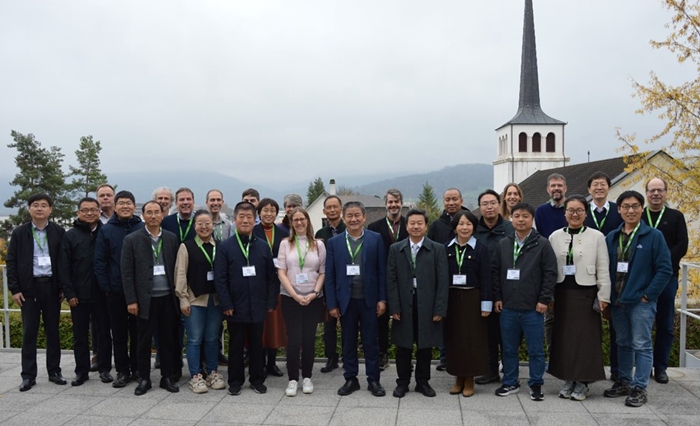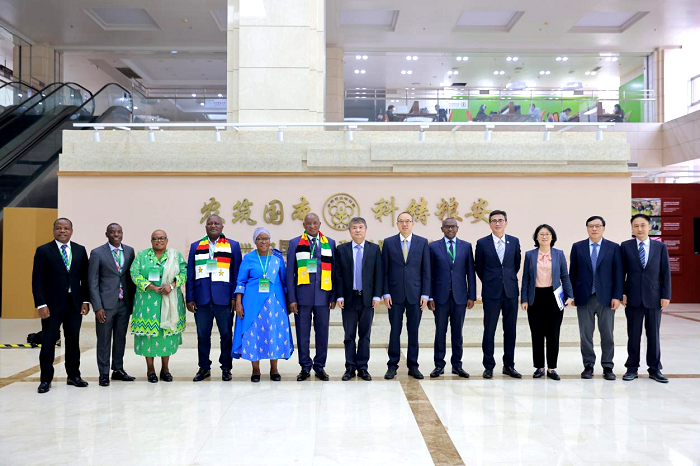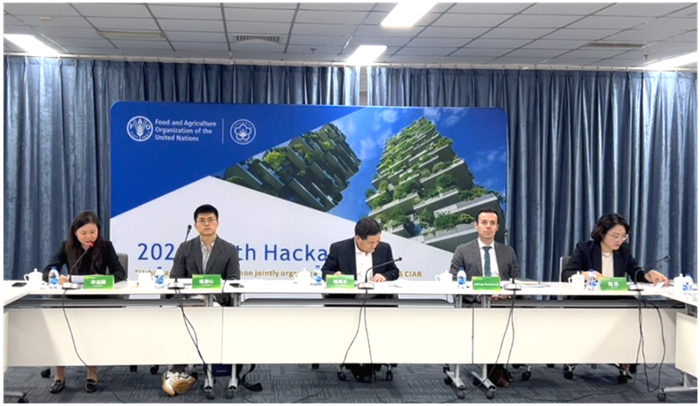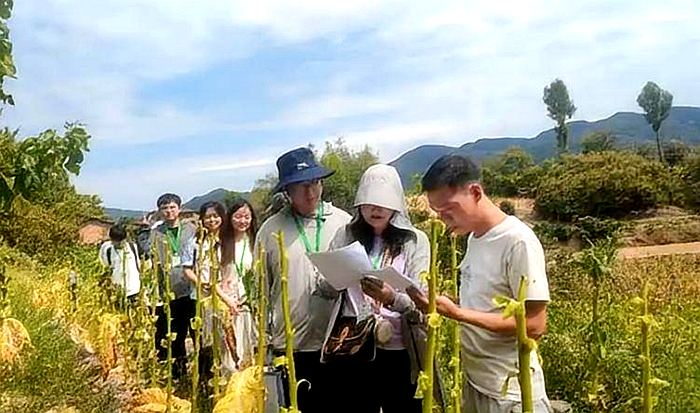IPPCAAS Collaboration Unveils New Mechanism of Geminivirus Infection
A collaborative research effort by the Crop Pathogen Functional Genomics Innovation Team at the Institute of Plant Protection, Chinese Academy of Agricultural Sciences (IPPCAAS), Zhejiang University, and other institutions recently resulted in the publication of a study titled "Geminivirus fitness via bZIP17/28 is impaired by the autophagic degradation of the betasatellite βV1 protein" in Plant Communications (Impact Factor: 9.4). This study unveils the dual role of the unfolded protein response (UPR) induced by endoplasmic reticulum (ER) stress during geminivirus infection, offering fresh insights into the molecular interplay between plants and geminiviruses.
The endoplasmic reticulum (ER) is a vital organelle in eukaryotic cells responsible for protein folding, modification, and secretion. Under biotic or abiotic stress, the likelihood of protein misfolding increases significantly. Accumulation of misfolded proteins in the ER disrupts its normal functions, resulting in a state of ER stress. To restore ER homeostasis, cells activate mechanisms such as the unfolded protein response (UPR), ER-associated protein degradation, and autophagy to mitigate ER stress and maintain systemic balance.
Geminiviruses are DNA viruses that inflict substantial damage on economically significant crops worldwide. Betasatellite DNA β, a single-stranded circular DNA molecule associated with geminiviruses, plays a role in viral pathogenicity. The research team previously identified a novel pathogenicity-related gene, βV1, encoded by betasatellite DNA β ( SCIENCE CHINA-Life Sciences 63: 688-696, 2020). In the current study, the βV1 protein was shown to localize in the ER and trigger ER stress in plant cells, specifically activating the bZIP17/28 pathway of the UPR. Notably, the C-terminal deletion of βV1 rendered it unable to activate bZIP17/28, significantly reducing its pathogenicity. The activation of bZIP17/28 was found to be essential for viral infection, identifying bZIP17/28 as susceptibility factors.
Interestingly, βV1-induced ER stress also activated autophagy in plant cells, leading to the degradation of βV1 via the autophagic pathway. The study revealed that ATG18a, a core autophagy protein, was involved in the degradation of βV1 and played a critical role in plant defense against geminiviruses. These findings shed light on the intricate interactions between viruses and host plants, providing novel targets and strategies for antiviral research in plants.
Dr. Hu Tao, a postdoctoral researcher at Zhejiang University, is the first author of the paper. Dr. Li Fangfang and Prof. Zhou Xueping at IPPCAAS are the co-corresponding authors. Additional contributions were made by Dr. Li Chenyang from Jiangsu Academy of Agricultural Sciences, Associate Researcher Wang Yaqin from Zhejiang University, and doctoral candidates Liu Hui and Su Chenlu from Zhejiang University.

-
 Dec 05, 2024China-CABI Project Development Workshop Held in Delémont, Switzerland
Dec 05, 2024China-CABI Project Development Workshop Held in Delémont, Switzerland -
 Dec 05, 2024Ministerial Workshop on Digital Agriculture and Rural Revitalization for BRI Partner Countries Held at CAAS
Dec 05, 2024Ministerial Workshop on Digital Agriculture and Rural Revitalization for BRI Partner Countries Held at CAAS -
 Dec 05, 2024CIAR and FGV Deepen Cooperation to Promote the Development of China-Brazil Green Agricultural Products Value Chain
Dec 05, 2024CIAR and FGV Deepen Cooperation to Promote the Development of China-Brazil Green Agricultural Products Value Chain -
 Dec 05, 20242024 Youth Hackathon for Urban Agriculture Finals Successfully Held in Beijing
Dec 05, 20242024 Youth Hackathon for Urban Agriculture Finals Successfully Held in Beijing -
 Dec 05, 2024Independent Impact Evaluation of Sustaining Poverty Reduction through Agribusiness Development in South Shaanxi (SPRAD) Successfully Completed
Dec 05, 2024Independent Impact Evaluation of Sustaining Poverty Reduction through Agribusiness Development in South Shaanxi (SPRAD) Successfully Completed
